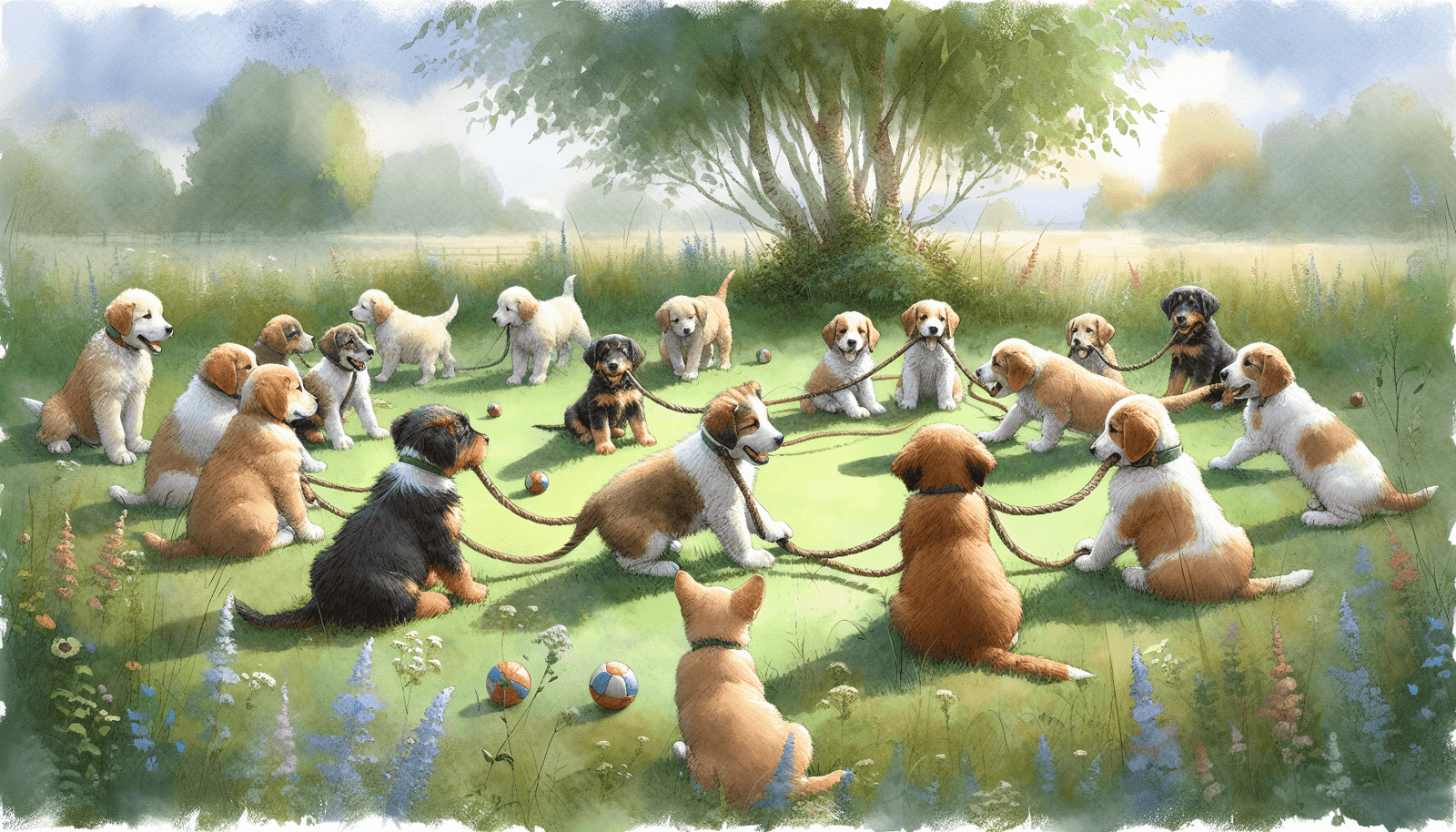Welcoming a new puppy into your home is both thrilling and a bit nerveracking. You want to make sure you and your pup become best friends from the start. Puppy bonding exercises can help you build trust, boost confidence, and communicate clearly with your new companion. In this guide, you’ll find easy, science-backed activities designed for brand-new dog owners. Let’s dive in and get that tail wagging.
Prepare the environment
Do you know how to set up a welcoming space for your puppy? A calm, predictable spot helps your pup feel safe and curious. Start by creating a cozy den with a crate or bed in a low-traffic area. This safe space becomes your puppy’s home base as they explore.
Create a safe space
- Choose a quiet corner free from loud noises.
- Use a comfortable bed or crate with soft padding.
- Add a low barrier (like a baby gate) to limit roaming.
Stock bonding essentials
Gather tools that make training and play easier. Keep a treat pouch near your hip, a clicker (for clear feedback), chew toys, and a sturdy leash within reach. For extra insights on building trust, see our guide on how to bond with your new puppy.
Practice gentle handling and grooming
Want to make touch and brushing feel like a spa session for your pup? Regular, calm handling gets your puppy comfortable with being touched all over. That paves the way for vet visits, nail trims, and checkups without drama.
Handling basics
- Start slow by touching one area at a time, like the paw or ear.
- Reward relaxed behavior with a soft voice and a small treat.
- Keep sessions short (1-2 minutes) and fun to avoid overwhelming them.
Calm grooming sessions
- Use a soft brush and gentle strokes along the fur.
- Incorporate light massages (neck and shoulders are good spots).
- Praise your puppy and offer treats throughout to create positive associations.
Teach basic commands
Ever thought how a simple “sit” can boost your bond? Teaching commands helps your puppy understand you and gives them mental exercise. Use positive reinforcement (praise and treats) to keep things cheerful.
Sit and stay
- Hold a treat above your pup’s nose, then move it back toward their tail.
- As they sit, say “sit” and click or deliver the reward.
- Add “stay” by stepping back slowly, pausing, then praising if they hold position.
Come when called
- Crouch down and call your puppy’s name followed by “come.”
- Reward any forward movement with enthusiasm and a treat.
- Repeat in different spots to generalize the command.
Name recognition
- Say your puppy’s name in a friendly tone before offering attention or treats.
- Reinforce that name equals good things, like play or a scrap of kibble.
Play interactive bonding games
Looking for fun ways to connect? Interactive play teaches bite inhibition, impulse control, and listening skills. It also releases happy hormones in both of you.
Hide and seek
- Show your pup a treat or toy, then ask them to stay.
- Move to a nearby spot and call their name.
- Celebrate with praise and a reward when they find you.
Tug-of-war
- Use a sturdy rope toy and let your puppy grab one end.
- Teach them to release on cue (for example, “drop”).
- Keep play sessions short (2-3 minutes) to maintain good manners.
Want more ideas? Check out our page on puppy bonding games.
Introduce problem-solving tasks
How do you turn mealtime into brain time? Problem-solving challenges keep your puppy’s mind busy and strengthen your connection as you guide them.
Puzzle feeders
- Choose a level-appropriate feeder that dispenses kibble slowly.
- Supervise the first few tries and cheer progress.
- Clean the puzzle regularly to avoid bacteria buildup.
DIY enrichment toys
- Grab a muffin tin, drop treats in a few cups, and cover all cups with tennis balls.
- Let your pup figure out how to remove the balls to get the treats.
- Swap in different obstacles, like rolled-up towels or safe cardboard.
For more activity ideas, explore our puppy bonding activities.
Build confidence with challenges
Curious how to make your puppy more self-assured? Gentle challenges help pups learn they can trust their skills—and you.
Gentle agility courses
- Set up low hurdles using broom handles on stools.
- Add a tunnel (or large cardboard box) for crawls.
- Guide your puppy through each obstacle with treats and praise.
Leash walking adventures
- Attach the leash indoors for practice turns.
- Move outdoors to calm areas, rewarding loose-leash walking.
- Gradually introduce new sights and sounds to build resilience.
Keep routines consistent
Wonder why your puppy loves a schedule? Predictable routines deliver comfort and clear communication. When you’re consistent, your puppy learns what to expect and when.
Feeding and rest schedule
- Offer meals at the same times each day.
- Remove food after 15 minutes to encourage prompt eating.
- Schedule quiet time or naps after feeding.
Training time slots
- Do 5-minute sessions, 2-3 times a day.
- End each session on a high note with a simple command your puppy masters.
- Track progress in a journal or app to celebrate wins.
Summary and next steps
You now have a toolbox of puppy bonding exercises to start building trust and friendship. Here’s a quick recap:
- Create a safe, welcoming space.
- Practice gentle handling and calm grooming.
- Teach sit, stay, come, and name recognition.
- Play hide and seek and tug-of-war together.
- Introduce puzzle feeders and DIY enrichment.
- Build confidence with agility and leash walks.
- Keep feeding, rest, and training times consistent.
Which exercise will you try first? Let me know in the comments below. For more expert puppy bonding tips, keep exploring and have fun getting to know your new best friend.

